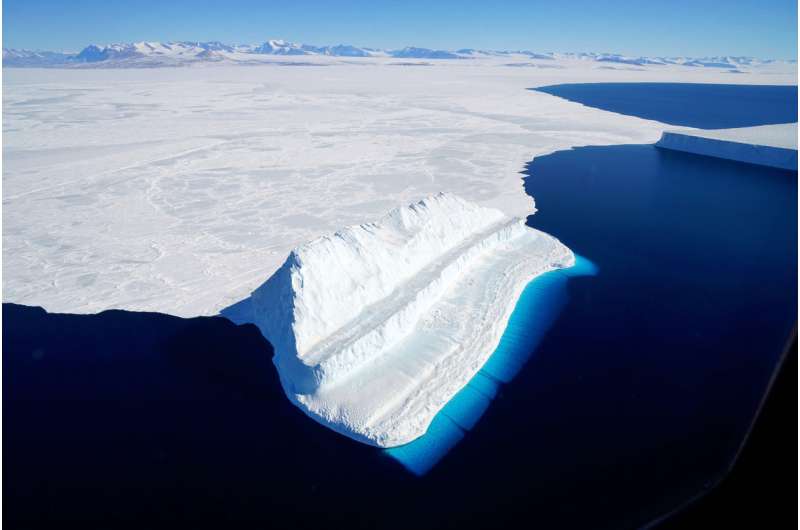Image: The bluest of ice

Acquired on November 29 by Operation IceBridge during a flight to Victoria Land, this image shows an iceberg floating in Antarctica's McMurdo Sound. The part of the iceberg below water appears bluest primarily due to blue light from the water in the Sound.
The undersides of some icebergs can be eroded away, exposing older, denser, and incredibly blue ice. Erosion can change an iceberg's shape and cause it to flip, bringing the sculpted blue ice above the water's surface. The unique step-like shape of this berg—compared to the tabular and more stable berg in the top-right of the image—suggests that it likely rotated sometime after calving.
Operation IceBridge—an airborne mission to map polar ice—recently made several flights out of the McMurdo and Amundsen-Scott South Pole stations, giving researchers greater access to the interior of the icy continent. For the ninth year in a row, flights over Antarctica have turned up ample science data, as well as spectacular images.
Provided by NASA















